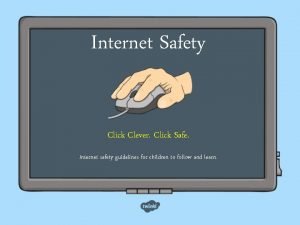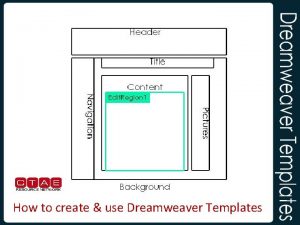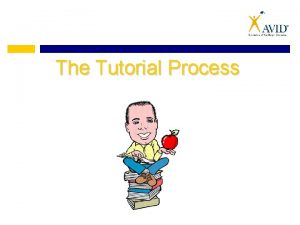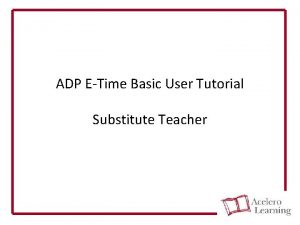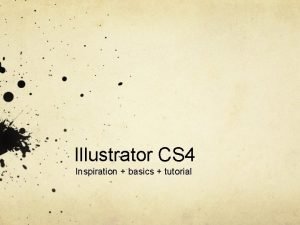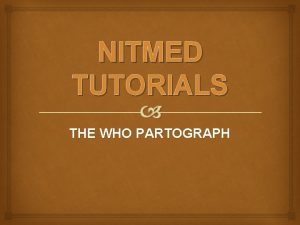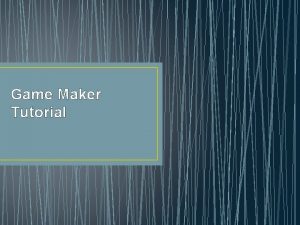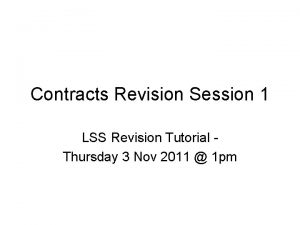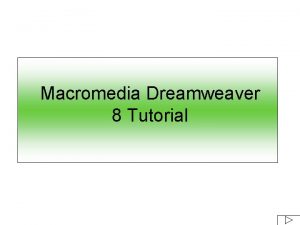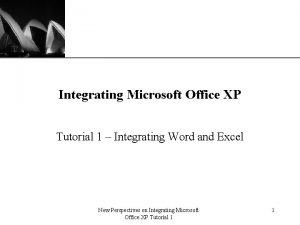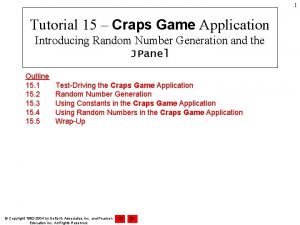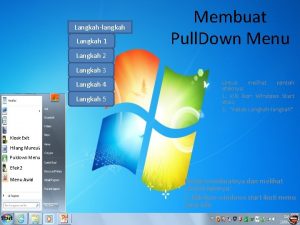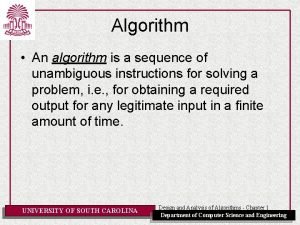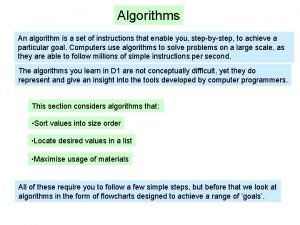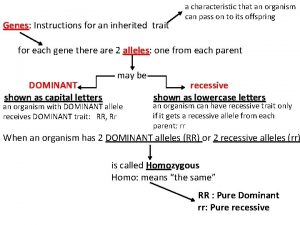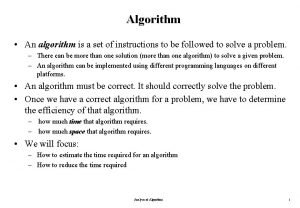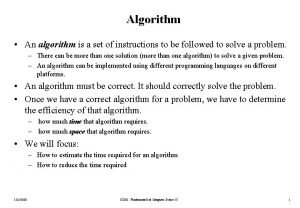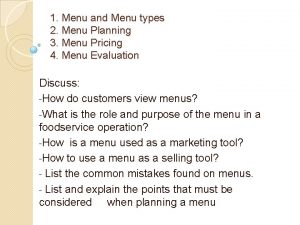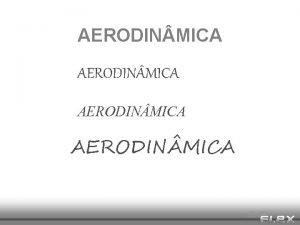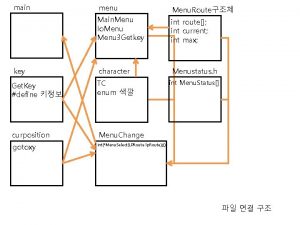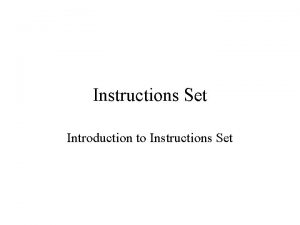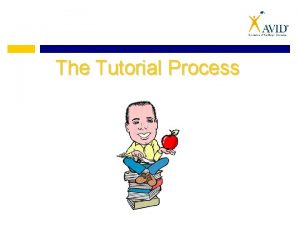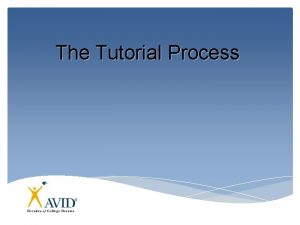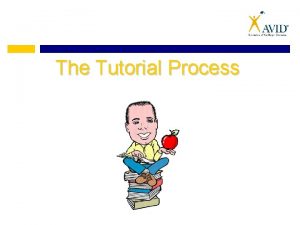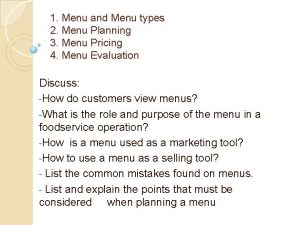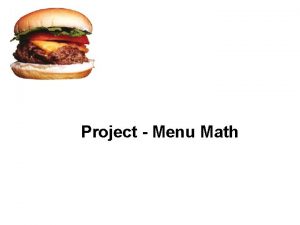Click the menu for instructions tutorials Instructions Set
























































![Name: Class: Progress Update: [Date Here] This week I have…. Snippets of my updated Name: Class: Progress Update: [Date Here] This week I have…. Snippets of my updated](https://slidetodoc.com/presentation_image_h/c7af0456b79315a9c504d0fa6ce6fc4b/image-57.jpg)
- Slides: 57

Click the menu for instructions & tutorials Instructions Set Up A Screen Create a Player Create Movement Collision Detection Creating Levels Adding Sound / Music Scores & Saving Progress & Marks 30/11/2020 19: 35: 21 (c) Holly Billinghurst 2017 - Creative Commons

Click the logo to navigate to the main menu: Instructions Click these buttons to navigate through the sections : Instructions 1 2 3 4 5 6 7 Marks You have been contacted by XY Games with a project to complete for them. Their client wants you to design a new computer game for them to launch for ages 10 – 14 year olds. They have written a brief requirements specification which XY Games wants you to follow along with some ideas of your own. To help you along the way, XY Games have provided you with some tutorials to get you started with some of the main aspects of the game. As their client is offering a great deal of money for the game, they would like you to provide updates of your progress in the form of a 1 page report & video of the game working each week. This should be stored in your ‘Computer Science’ folder for them to copy & send to the client. You will receive client feedback each week. To help you with your report, a template has been provided. Click this button to move through this section: 30/11/2020 19: 35: 22 © Holly Billinghurst 2017 - Creative Commons

Click the logo to navigate to the main menu: Instructions Click these buttons to navigate through the sections : Instructions 1 2 3 4 5 6 7 The tutorials in this presentation should be viewed in order – where code has been added code already seen in a previous section a red box highlights the new / changed code. Don’t forget to save your code regularly (every few minutes) and save each section as a new version by selecting File Save As, then using My. Game_v 1. py, My. Game_v 2. py…. Additional Resources: The Official Py. Game e-Book Program Arcade Games Website Click these buttons to navigate within sections : 30/11/2020 19: 35: 22 © Holly Billinghurst 2017 - Creative Commons Marks

Client Requirements Instructions Must • Be written in Py. Game • Be a Platform Game • Allow keyboard input for movement (WASD / arrows) • Include collision detection 1 2 3 4 5 6 7 Marks Should Could Won’t • Have 2 or more levels • Allow users to save high scores • Include images / spites • Output a leaderboard from previous players • Include music • Include sounds • Be web based • Allow player to move out of screen • Include errors that don’t have a user friendly message • Use copyright material Click this button to move back through this section: 30/11/2020 19: 35: 22 © Holly Billinghurst 2017 - Creative Commons

Setting Up a Game Screen Instructions 1 2 3 4 5 6 7 Marks Start creating your Py. Game game by opening up Python 3. 2 IDLE (don’t open 3. 4 by mistake as this doesn’t have Py. Game installed!) Now click File New Window to create a new python program. Save this as My. Game_v 1. py The v 1 in the name means ‘version 1’ which will allow you to create a new version for each save. This means if you make a mistake, you can always roll back! 30/11/2020 19: 35: 24 © Holly Billinghurst 2017 - Creative Commons

Setting Up a Game Screen Instructions 1 2 3 4 5 6 7 Marks In your new program, import the library files that you need to start your game. Don’t forget to add comments to explain what these do. Add this code to your program. pygame. init() initialises the pygame code hidden in the import above. Don’t forget to change the display to the size & name you want to give your game! 30/11/2020 19: 35: 26 © Holly Billinghurst 2017 - Creative Commons

Setting Up a Game Screen Instructions 1 2 3 4 5 6 7 Marks Finally, create the main part of your program which will loop until your user presses quit. 30/11/2020 19: 35: 27 © Holly Billinghurst 2017 - Creative Commons

Setting Up a Game Screen Instructions 1 2 3 4 5 6 7 Marks Here’s a few hints on how to customise the code Change this line to adjust the screen colour (it’s in RGB) Change this line to adjust the colour of the rectangle Change the green text to change the title that appears on the game window: Change this line to adjust the size of the game window (width, height) 30/11/2020 19: 35: 28 © Holly Billinghurst 2017 - Creative Commons

Setting Up a Player Instructions 1 2 3 4 5 6 7 Marks Before we jump into the code, it is worth understanding that we are using a style of code called Object Oriented. This is an efficient way of coding when objects such as enemies, walls, or pickups appear more than one (you only need to code them once!) Class Object A class is like a blueprint of an object. Here, a class of cat tells us that a cat has a colour, number of ears, a name etc. All of this describes a cat. 30/11/2020 19: 35: 29 An object is real. In this case, my cat’s name is Greebo, he has grey fur, and two ears. He is a ‘real’ instance of a cat which was the class. © Holly Billinghurst 2017 - Creative Commons

Setting Up a Player Instructions 1 2 3 4 5 6 7 Marks You should already have coded your imports at the start of your program (if not, click on tutorial 1 above). Under this, create your player class. In here, you will code three procedures that create & move the rectangle. 30/11/2020 19: 35: 30 © Holly Billinghurst 2017 - Creative Commons

Setting Up a Player Instructions 1 2 3 4 5 Just like a procedure or function, even though we have added the code, nothing will happen until we have called it. For a class, nothing happens to the description, until you create the object. The clock works a little bit like time. sleep() in regular Python code. 30/11/2020 19: 35: 32 © Holly Billinghurst 2017 - Creative Commons 6 7 Marks

Setting Up a Player Instructions 1 2 3 4 5 6 7 Marks What has changed in the main program? We’ve added a 1 second pause We’ve added another IF statement to do something when we press SPACE We’ve changed the rectangle into our Player class Don’t forget to save this as a new version in case you make a mistake! Eg. My. Game_v 2. py 30/11/2020 19: 35: 33 © Holly Billinghurst 2017 - Creative Commons

Setting Up a Player Instructions 1 2 3 4 5 6 7 Marks The code above is enough to create the basic code for a rectangle with a solid colour to appear on your screen (click on tutorial 3 to make your player move!), but what if you want to go further? Would you like to use a different shape? For more on drawing your own shapes, you can follow this link Would you like to use an image instead of a shape? Click next 30/11/2020 19: 35 © Holly Billinghurst 2017 - Creative Commons

Setting Up a Player Instructions 1 2 3 4 5 6 7 Marks The code we will use to create image sprites is similar to the shape, but we need to create the image & save it to the same folder as our python code first. Actual size of image used! You can choose to adjust your player class here, or create a new player_sprite class. Don’t forget to save this as a new version in case you make a mistake! Eg. My. Game_v 3. py 30/11/2020 19: 35: 36 © Holly Billinghurst 2017 - Creative Commons

Setting Up a Player Instructions 1 2 3 4 5 6 7 Marks The only code that has changed here is the class type & the __init__() procedure which brings in an image instead of drawing a shape. 30/11/2020 19: 35: 37 © Holly Billinghurst 2017 - Creative Commons

Setting Up a Player Instructions 1 2 3 4 5 Drawing the object on screen requires us to: • create a Sprite Group • set the co-ordinates (place on the screen) • add the sprite to the Group • then draw all sprites in the Group. Phew! 30/11/2020 19: 35: 39 © Holly Billinghurst 2017 - Creative Commons 6 7 Marks The image object can be created in the same way as before.

Moving The Player Instructions 1 2 3 4 5 When we created the Player class, we actually set up all of the procedures needed to move our player rectangle, but we didn’t call them in the main program. Let’s do that now! 30/11/2020 19: 35: 40 © Holly Billinghurst 2017 - Creative Commons 6 7 Marks

Moving The Player Instructions 1 2 3 4 5 6 7 Marks Underneath the FOR loop that took in the key presses, we are going to create four IF statements that call the move() procedure for the player & change its position. Note: You don’t have to use the arrows. Click here for alternative key presses 30/11/2020 19: 35: 41 © Holly Billinghurst 2017 - Creative Commons

Falling & Jumping Instructions 1 2 3 4 5 6 7 Marks For a real platformer, you need to have some basic physics in your game & this is usually seen in the form of falling. The first thing we are going to do is set the width & height of the game screen as variables (before we just used hard coded numbers) Next, we need to add an ELSE IF to the UP key press that moves the rectangle down if it’s not on the bottom of the screen. 30/11/2020 19: 35: 44 © Holly Billinghurst 2017 - Creative Commons

Falling & Jumping Instructions 1 2 3 4 5 6 7 Marks You now have a rectangle that appears near the top left of the screen and then falls to the floor. In other words, you have created gravity in your game world! 30/11/2020 19: 35: 46 © Holly Billinghurst 2017 - Creative Commons

Falling & Jumping Instructions 1 2 3 4 5 6 7 Marks The final part is to prevent the player from disappearing from the edges of the screen. The code seen here will allow your player to jump out one side of the screen and appear on the other. You may want to adjust this to make the edge of the screen a barrier. 30/11/2020 19: 35: 48 © Holly Billinghurst 2017 - Creative Commons

Creating Scenery Instructions 1 2 3 4 5 6 7 Marks Objects to be avoided can be anything you want in a game, but are usually walls, or platforms in this style of game. Here, we are going to create a list of walls in our game with each one being a square on the screen in a set pattern. To do this, we need to create a new class to describe what a wall is (a rectangle) and what it does (nothing!). 30/11/2020 19: 35: 49 (c) Holly Billinghurst 2017 - Creative Commons

Creating Scenery Instructions 1 2 3 4 5 6 7 Marks Objects to be avoided can be anything you want in a game, but are usually walls, or platforms in this style of game. Here, we are going to create a list of walls in our game with each one being a square on the screen in a set pattern. To do this, we need to create a new class to describe what a wall is (a rectangle) and what it does (nothing!). 30/11/2020 19: 35: 51 © Holly Billinghurst 2017 - Creative Commons

Creating Scenery Instructions 1 2 3 4 5 6 7 Marks Objects to be avoided can be anything you want in a game, but are usually walls, or platforms in this style of game. Here, we are going to create a list of walls in our game with each one being a square on the screen in a set pattern. To do this, we need to create a new class to describe what a wall is (a rectangle) and what it does (nothing!). 30/11/2020 19: 35: 52 © Holly Billinghurst 2017 - Creative Commons

Creating Scenery Instructions 1 2 3 4 5 6 7 Marks Because we need more than one wall, we can save these in a list (also known as an array). Here, we are using two lists: • level [ ] is a list of strings for each row in a level (the comma separates each row) Later, we will create more levels • walls [ ] is a list of levels, so a list of lists! 30/11/2020 19: 35: 54 © Holly Billinghurst 2017 - Creative Commons

Creating Scenery Instructions 1 2 3 4 5 6 7 Marks After creating the level, we need to read the letters into the program & create the Wall objects. Here, we are using a loop inside a loop, called a nested loop. Inner loop looks at each letter Outer loop looks at each row 30/11/2020 19: 35: 56 © Holly Billinghurst 2017 - Creative Commons

Creating Scenery Instructions 1 2 3 4 5 6 7 Marks The final part needed for showing scenery on the screen is at the end of the program where we draw our objects onto the screen. Note that we have used another loop here because there is more than one wall. We now have scenery, but something is missing… Don’t forget to save this as a new version in case you make a mistake! Eg. My. Game_v 3. py 30/11/2020 19: 35: 59 © Holly Billinghurst 2017 - Creative Commons

Creating Scenery Instructions 1 2 3 4 5 6 7 Marks Collision detection is the name given for adding programming that listens for when an object is touching another object. In the move_single_axis() procedure we have already created for the player, we need to add IF statements for each wall – Again, we have used a loop because we have more than one wall. 30/11/2020 19: 35: 59 © Holly Billinghurst 2017 - Creative Commons

Creating Scenery Instructions 1 2 3 4 5 6 7 Marks In our program with walls, this allows the player to jump using the physics we created in tutorial 3, and land on the walls that we created without falling any further. How else could we use this? Enemies could be placed on the screen Health ‘pickups’ could be added Mazes could be created Walls could be ‘don’t touch’ 30/11/2020 19: 36: 01 © Holly Billinghurst 2017 - Creative Commons

Creating Random Levels Instructions 1 2 3 4 5 6 7 Marks We have already set up the foundation of having more than one level by creating the list called level. Next, we need to create a new list called levels that holds all of the levels that could be played. In python, this is called a matrix, but for now all we need to remember is that we have used extra square brackets to separate each level. Add this into your program under the level [ ] list. 30/11/2020 19: 36: 03 © Holly Billinghurst 2017 - Creative Commons

Creating Random Levels Instructions 1 2 3 4 5 6 7 Marks If we want to change the wall objects on the screen, we need to clear what was there before. The easiest way to do this is to create a procedure which destroys the previous objects. If we don’t destroy the old objects first, the new objects will appear over the top of the old ones. 30/11/2020 19: 36: 04 © Holly Billinghurst 2017 - Creative Commons

Creating Random Levels Instructions 1 2 3 4 5 6 7 Marks In the main program, underneath the player move statements we now need to add an extra IF statement that deletes the old walls, then reads in the new level. (where have we seen this loop before? ) An extra feature is added here which selects a random level from the list instead of just moving up one! 30/11/2020 19: 36: 05 © Holly Billinghurst 2017 - Creative Commons

Creating Coloured Levels Instructions 1 2 3 4 5 6 7 The wall colour is set up as white to start with. Next, we need to create a random colour for the walls (why have we used 255 for the colour? ) 30/11/2020 19: 36: 06 © Holly Billinghurst 2017 - Creative Commons Marks

Creating Coloured Levels Instructions 1 2 3 4 5 6 7 Marks Finally, we need up update the drawing section at the end of the program to pass in the colour variable instead of a set colour. The colour of the walls is now randomly generated using the RGB (Red, Green, Blue) colour values. 30/11/2020 19: 36: 09 © Holly Billinghurst 2017 - Creative Commons

Adding Sounds & Music Instructions 1 2 3 4 5 6 7 Marks Py. Game allows you to add both music and sounds by saving. mp 3 files into your Py. Game code folder. If you intend to use lots of sound files, it may be useful to save them into a ‘sound’ folder in the code folder. Instead of just using the file name, you will need to also add the folder name. load("background_music. mp 3") Make sure that you are using royalty free music such as Creative Commons from Bensound load(“sound/background_music. mp 3") 30/11/2020 19: 36: 11 © Holly Billinghurst 2017 - Creative Commons

Adding Sounds & Music Instructions 1 2 3 4 5 6 7 Marks You can add a Py. Game music player at any point in your game, but to play music it is added at the start of the main program. Parameter Means -1 Loops sound forever 1 Plays the sound once 2 Plays the sound twice x Plays the sound for the value of x 30/11/2020 19: 36: 13 © Holly Billinghurst 2017 - Creative Commons

Saving Game Data Instructions 1 2 3 4 5 6 There a number of ways to save progress in games. When looking at Retro arcade style games, these saves were in the form of High Scores which allowed the player to enter their name into the ‘Hall of Fame’. This section will take us through how to save high scores into a text file and use them as part of our game. 30/11/2020 19: 36: 13 © Holly Billinghurst 2017 - Creative Commons 7 Marks

Outputting Text Instructions 1 2 3 4 5 6 7 Marks The first part of game scores is the ability to output text to the screen. Unlike using the print() function, in Py. Game this is a little more complex. We will start off by creating two new sub-routines underneath the wall class 30/11/2020 19: 36: 14 © Holly Billinghurst 2017 - Creative Commons

Outputting Text Instructions 1 2 3 4 5 6 7 Marks To allow us to pause whilst the player reads the text, we need to add the time import to the top of the code. Then, near the start of the main program (usually just after we start the game music) add in the code to display the game instructions. 30/11/2020 19: 36: 15 © Holly Billinghurst 2017 - Creative Commons

Creating a Score Instructions 1 2 3 4 5 6 7 Marks The current_score variable is created at the top of the code and given an initial value of 0. Then inside the code for player movement, we increment the current_score variable each time the game detects that the player touches the exit. The print() here just outputs the score to the Shell as a test 30/11/2020 19: 36: 16 © Holly Billinghurst 2017 - Creative Commons

Creating a Score Instructions 1 2 3 4 5 6 7 Marks Just like we did with the instructions, we can use the message_display() procedure to output the current score. Each time we reach the red exit square we should see the current score shown on the screen increase. 30/11/2020 19: 36: 18 © Holly Billinghurst 2017 - Creative Commons

Saving a Score Instructions 1 2 3 4 5 6 7 Marks Now we have a current score, we can use a text file to remember the highest score so far. To do this, we need to create two new sub-routines underneath our message_display() procedure. The first of these will save our high score to a text file. Try-Catch statements let us run code that may error. First it tries to run the code we want, then if an error occurs it allows us to stop the program crashing. This is called ‘error handling’ 30/11/2020 19: 36: 19 © Holly Billinghurst 2017 - Creative Commons

Saving a Score Instructions 1 2 3 4 5 6 7 Marks The second sub-routine is reading the high score from the text file & loading it into the program. This is a function because it returns a value (procedures do not). Look! Here we can catch two types of error, An IO Error handles errors where the data can’t be found. A Value Error handles errors here the file can’t be read, or the data type is wrong. 30/11/2020 19: 36: 22 © Holly Billinghurst 2017 - Creative Commons

Saving a Score Instructions 1 2 3 4 5 6 7 Marks At the start of the main program loop, we create the high_score variable with the value passed back by the load_high_score() function. Once we have the ability to save a high score, we need to know when to update the score. Here, an IF statement calls the save_high_score() procedure once the current score goes beyond the high score. Look at your text file to check! 30/11/2020 19: 36: 23 © Holly Billinghurst 2017 - Creative Commons

Saving a Score Instructions 1 2 3 4 5 6 7 Marks Finally, we need to add the final line which outputs the High Score under the Current Score: Both scores should now appear at the bottom right of the game screen and update as you move through the game. But is this enough for a leaderboard? Nearly… 30/11/2020 19: 36: 24 © Holly Billinghurst 2017 - Creative Commons

Leaderboards - Extension Instructions 1 2 3 4 5 6 7 Marks Leaderboards in Py. Game require us to understand the logic behind how data is saved both physically & logically in our program. This section is here to challenge you! The first thing we are going to do is create a text file containing three names and their scores (you may need to create this in Word. Pad if the network prevents you from using Note. Pad) Don’t forget to save & close your file. If you open a file, just like a cupboard you can’t open it again without closing it first! 30/11/2020 19: 36: 25 © Holly Billinghurst 2017 - Creative Commons

Leaderboards - Extension Instructions 1 2 3 4 5 6 7 Next we are going to extend our imports to include re This allows us to use a function which finds the numbers in a string. Clever huh? Underneath the imports we are going to create a special type of variable called a global variable. Leaderboard is also going to be a list (array). Global variables can be seen & used anywhere in the code, including inside subroutines. 30/11/2020 19: 36: 26 © Holly Billinghurst 2017 - Creative Commons Marks

Leaderboards - Extension Instructions 1 2 3 4 5 6 7 Marks Just like we did for loading & saving the simple high score, we are going to create two new sub-routines for loading and saving our leaderboard. Unlike the simple read from before, this procedure reads each line from the file and saves it into a new item in the array. This way, each leader has their own item. 30/11/2020 19: 36: 26 © Holly Billinghurst 2017 - Creative Commons

Leaderboards - Extension Instructions 1 2 3 4 5 6 7 Marks Thankfully, our save procedure is almost identical to the high score procedure. The only difference here is that we have passed in a string instead of a number. Why use sub-routines? Programmers use sub-routines (functions & procedures) to make their code more efficient. It allows you to use the code more than once with different values. Put simply: “Genius through the pursuit of laziness” 30/11/2020 19: 36: 27 © Holly Billinghurst 2017 - Creative Commons

Leaderboards - Extension Instructions 1 2 3 4 5 6 7 Marks To display the current leaderboard at the start of the game, we can adjust the code to include a call to the load_leaderboard() procedure and then a loop through each leader in the list. How else could we use this? I have chosen to display my high scorers at the start of the game. Perhaps you could display yours at the end, as a scrolling list going up the screen, or as names flashing up one by one? 30/11/2020 19: 36: 28 © Holly Billinghurst 2017 - Creative Commons

Leaderboards - Extension Instructions 1 2 3 4 5 6 7 Marks Updating the leaderboard requires us to look at the logic of a leaderboard. Let’s use this flowchart to help: START Is score > highest leader? Yes END No Is score > 2 nd highest leader? No Is score > 3 rd highest leader? Yes INPUT name Highest leader = name + score 2 nd Highest leader = name + score 3 rd Highest leader = name + score 30/11/2020 19: 36: 29 © Holly Billinghurst 2017 - Creative Commons No

Leaderboards - Extension Instructions 1 2 3 4 5 6 7 Marks Although we have been updating the current score throughout the main game loop, writing into the leaderboard happens at the end of the game & after the main game loop. Here, we need to set up the extra variables needed for writing into the correct place. Remember importing re? This is where we use it to extract the number (score) from the leaderboard 30/11/2020 19: 36: 30 © Holly Billinghurst 2017 - Creative Commons

Leaderboards - Extension Instructions 1 2 3 4 5 6 7 Marks We set up leader_entry to allow us to loop the output to the screen until our user has finished entering their name. Using our flowchart logic, we then need to check if our current score is higher than either the 1 st, 2 nd, or 3 rd highest scorer. leader_number will tell the code where to write the high score in the list (4 means don’t write it at all!) 30/11/2020 19: 36: 31 © Holly Billinghurst 2017 - Creative Commons

Leaderboards - Extension Instructions 1 2 3 4 5 6 7 Marks Next we run the save game code IF the player needs to feature in the leaderboard. Each keyboard press is recorded & output to the screen until the player presses ENTER. Then the save_leaderboard() procedure is called. 30/11/2020 19: 36: 31 © Holly Billinghurst 2017 - Creative Commons

Leaderboards - Extension Instructions 1 2 3 4 5 6 7 Marks Finally, an ELSE statement is used to allow a simple ‘Game Over’ to display before the game quits if the player didn’t make it to the leaderboard. Run the game again, or open your text file to check if the leaders names & scores have been updated! 30/11/2020 19: 36: 32 © Holly Billinghurst 2017 - Creative Commons

Marking Checklist Instructions 1 2 3 Task 4 5 Complete Comments Create Py. Game screen with background colour & title Create a player class & object which moved using keyboard input Create an image sprite in the game Create physics which makes an object fall (or fly) Create collision detection for game screen edges Create lists of objects on the game screen Create collision detection with other objects Create multiple levels in the game Add sounds / music to the game Allow user to save progress 30/11/2020 19: 36: 33 6 © Holly Billinghurst 2017 - Creative Commons 7 Marks
![Name Class Progress Update Date Here This week I have Snippets of my updated Name: Class: Progress Update: [Date Here] This week I have…. Snippets of my updated](https://slidetodoc.com/presentation_image_h/c7af0456b79315a9c504d0fa6ce6fc4b/image-57.jpg)
Name: Class: Progress Update: [Date Here] This week I have…. Snippets of my updated code: I tested this by… Next week I plan to… My video for this week is called: 30/11/2020 19: 36: 33 © Holly Billinghurst 2017 - Creative Commons
 Click clever click safe
Click clever click safe Click clever click safe
Click clever click safe Cyber safety
Cyber safety Click clever click safe
Click clever click safe Total set awareness set consideration set
Total set awareness set consideration set Training set validation set test set
Training set validation set test set Click here for instructions
Click here for instructions Dreamweaver tutorials mx
Dreamweaver tutorials mx Flash dreamweaver templates
Flash dreamweaver templates Telpas tutorials
Telpas tutorials Radiologymasterclass.co.uk › tutorials
Radiologymasterclass.co.uk › tutorials Zemax thermal analysis
Zemax thermal analysis Xna game tutorial
Xna game tutorial Nitmed tutorials
Nitmed tutorials Poc avid examples
Poc avid examples Tutorialspoint dotnet
Tutorialspoint dotnet Adp tutorial
Adp tutorial Nitmed tutorials
Nitmed tutorials Dreamweaver php tutorials
Dreamweaver php tutorials Telpas online test student tutorials
Telpas online test student tutorials Adobe illustrator cs tutorials
Adobe illustrator cs tutorials Online planbook
Online planbook Halide auto scheduler
Halide auto scheduler Tmath::gaus
Tmath::gaus Importance of partograph
Importance of partograph Gamemaker tutorials
Gamemaker tutorials Ameritas vision card
Ameritas vision card Nitmed
Nitmed Ccm tutorials
Ccm tutorials Haas tutorials
Haas tutorials Lss software tutorials
Lss software tutorials Nitmed tutorials
Nitmed tutorials Nitmed
Nitmed Dreamweaver 8 tutorials
Dreamweaver 8 tutorials Microsoft office xp tutorial
Microsoft office xp tutorial Dragon network edition
Dragon network edition Craps tutorials
Craps tutorials Gmail
Gmail Nitmed tutorials
Nitmed tutorials Comp 442
Comp 442 Athermal lens
Athermal lens Difference between classical menu and modern menu
Difference between classical menu and modern menu Ikon mozilla firefox
Ikon mozilla firefox Contoh siklus menu
Contoh siklus menu Ikon microsoft excel
Ikon microsoft excel Menu pull down
Menu pull down Software is a set of instructions
Software is a set of instructions A set of unambiguous instructions is known as algorithms
A set of unambiguous instructions is known as algorithms 8086 microprocessor instruction set
8086 microprocessor instruction set An algorithm is a set of instructions
An algorithm is a set of instructions Instructions for an inherited trait are called
Instructions for an inherited trait are called An algorithm is a set of instructions
An algorithm is a set of instructions An algorithm is a set of instructions
An algorithm is a set of instructions Menü planlama ilkeleri
Menü planlama ilkeleri Types of menus
Types of menus Crisp set vs fuzzy set
Crisp set vs fuzzy set The function from set a to set b is
The function from set a to set b is Crisp set vs fuzzy set
Crisp set vs fuzzy set


